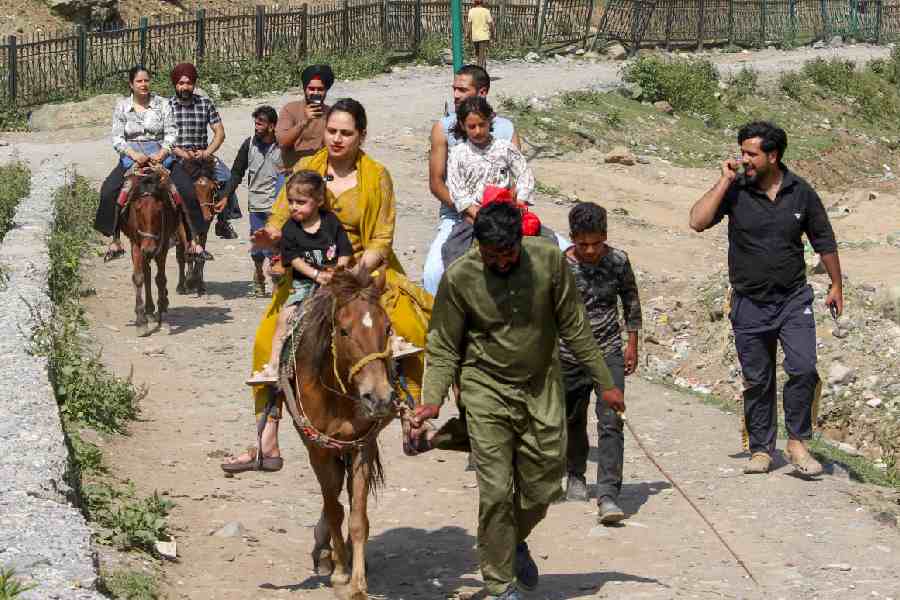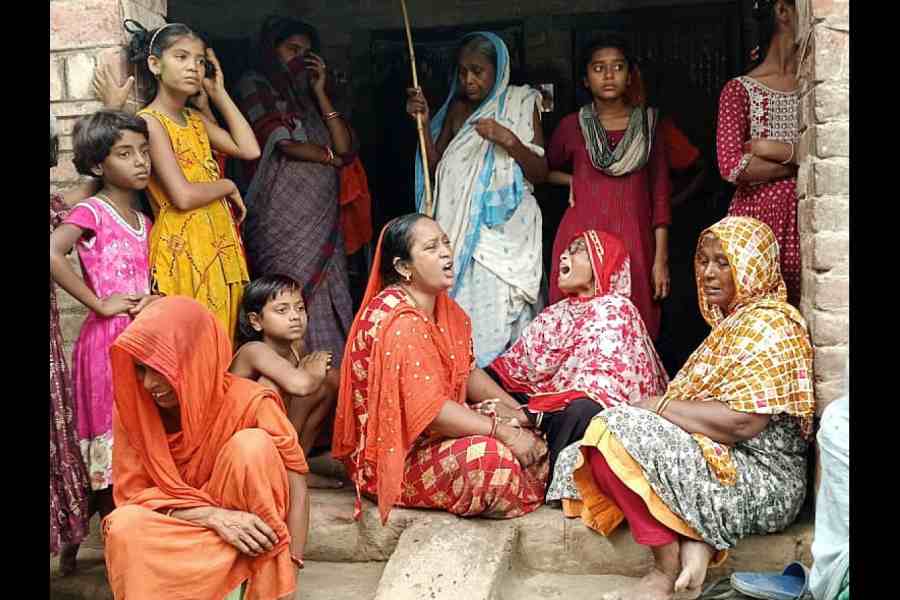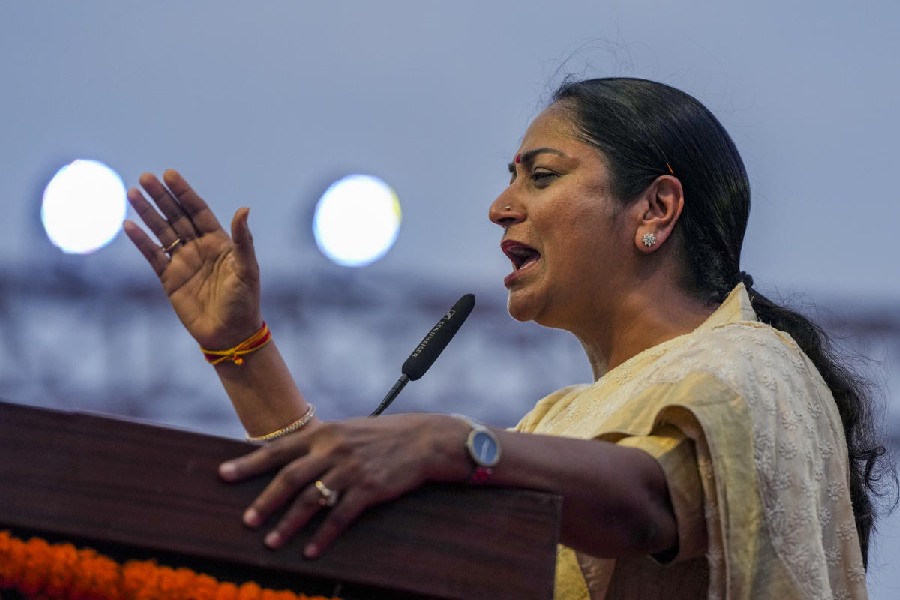Malda, Aug. 26: More than two decades after the irrigation department made the blunder of building embankments to rein in the Ganga and arrest its flow with barrages and dams, the river has struck back with a vengeance.
Over 5,000 families displaced by large-scale erosion are grappling with the grim prospect of losing their village to the river even as the government tries to come to terms with the possibility of the river endangering the Farakka Barrage and the Calcutta Port.
As the river continues to breach embankments and gobble up villages, experts continue to pint fingers at the irrigation department.
“Building embankments and bunds to tether a river like the Ganga is impossible. Plans of building embankments should have been given a lot more thought,” said Pundarikaksha Roy, the executive engineer of the irrigation department.
The Ganga, which carries debris as it descends from the hills to the plains, deposits its load as its natural flow is impeded by the embankments. The meandering course of the river results in the silt being deposited on one bank, which, in turn, changes the course of the river.
An irrigation department source said the Ganga covers an area of 10-lakh sq km in its upper reaches. “Squeezed between embankments on its lower course, the river has cut into the weakest part, the mudflats on its left banks where the villages are situated.”
Though erosion is a way of life for villagers living by the river, even old timers said that the river had never looked so threatening. They do not know the statistics, but the Ganga has cut an unprecedented 600 feet into the villages in Panchandapur this year.
“Had the embankments been built some distance away from the river, the damage would have been lesser because the Ganga would get more space to deposit its load. As a rule, embankments and bunds should be constructed at least half a kilometre away from the immediate bank of the river, but that rule was never followed,” Roy said.
Former executive engineer of the Farakka Barrage Prasad Sen echoed Roy. “A sprawling sandbank on the right bank of the river was, even up to 1996, spur no. 20. As the level of silt rose and covered the spur, the river changed its course, cutting deeper into the villages on the opposite bank. There are more than 60 sandbanks between Rajmahal and Farakka Barrage.”
“The worst blunder was to build the 25-km long ring embankment around Bhootni island in 1972. The havoc wreaked by the river began because of this embankment,” Sen said.
“Erosion and floods will assume greater proportions if action is not taken. The only viable solution is to destroy the ring embankment surrounding Bhootni. The government will have chalk out plans to dredge the river and free its course of the sediments that impede its natural flow,” he added.










